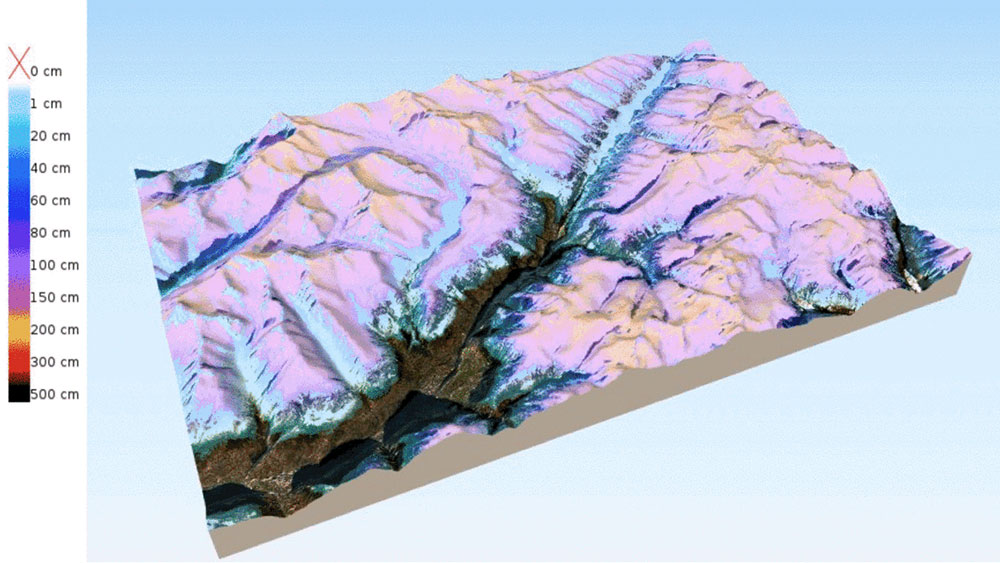
Snow is an indispensable water reservoir for hydroelectric power plants because at higher altitudes in summer it turns into meltwater, which is then stored in reservoirs. If the operators of hydroelectric power plants knew in advance when and how much meltwater is going to flow into their reservoirs, they would be able to optimize water reservoirs along with their electricity generation. However, a lot of hydroelectric power plants do not have this information (as yet) about snow distribution in the catchment areas of their reservoirs.
“We want to provide hydroelectric power plant operators with forecasts for melting snow and influx of water to help them generate energy in a more profitable way,” says Reik Leiterer, co-founder of ExoLabs and research associate at the Science Lab of the University of Zurich (UZH, Switzerland). This kind of knowledge also has a financial impact. “A 500-megawatt hydroelectric power plant can save up to half a million Swiss francs a year if it is able to plan more precisely around the availability of water in its reservoirs.”
Cooperation between three nations
ExoLabs is working on the project together with the Norwegian start-up Think Outside and the Austrian company UBIMET. The three companies have developed a computational model based on earth observation data which can assist hydropower plant operators in their planning.
ExoLabs contributes its know-how by evaluating large quantities of satellite images in various spatial, temporal, and spectral dimensions. These daily updated digital maps allow the detection, evaluation, and prediction of environmental changes thanks to their high-grade resolutions. According to the scientists, the information includes “among other things, the distribution and height of the snow coverage as well as the amount of water it contains – and this at a spatial resolution of 20 meters.”
Think Outside is now capable of measuring the snow conditions in the terrain using a specially developed mobile sensor that supplements the snow maps. “We can calibrate and validate our satellite data and thus improve our product by collecting this precise data from the terrain,” Leiterer states.
UBIMET provides meteorological forecasts and calculates snow precipitation quantities. “This component also supports our calculations – for example, when we can barely see anything on our satellite images due to heavy cloud cover,” Leiterer continues. Moreover, UBIMET can also predict relevant wind strengths and directions. These are key to the distribution of the snow over the area.
“Our cooperation and diverse expertise enable us to create a snow monitoring model that enables hydroelectric power plants to estimate very accurately when and how much meltwater flows into their reservoirs,” Leitererer says summing it up.
Funded by the EU
The project is funded by the EU to the tune of €100,000 under the “Parsec Accelerator” program. The funding program supports new products or projects “that have great potential in the fields of food, energy or environment”.
ExoLabs and its partners are now working on a strategy to bring the product to market. The researchers also want to work with selected companies to develop showcase projects. “Our service is new, so we first need to present demonstration projects with hydropower plants in order to convince other potential customers,” said Leiterer. Initial cooperation with the Oberhasli power plants (KWO Grimselstrom) is under consideration. In future, the companies also want to conquer the international market. “Our calculation model is very scalable and we can use it for hydroelectric power plants all over the world, although in Europe alone there are over 130 hydroelectric power plants that are of relevance to us,” says Leiterer.
Title image: A digital map drawn up by ExoLabs showing the distribution and height of the snow coverage around the Aletsch glacier. ( Image: ExoLabs)

